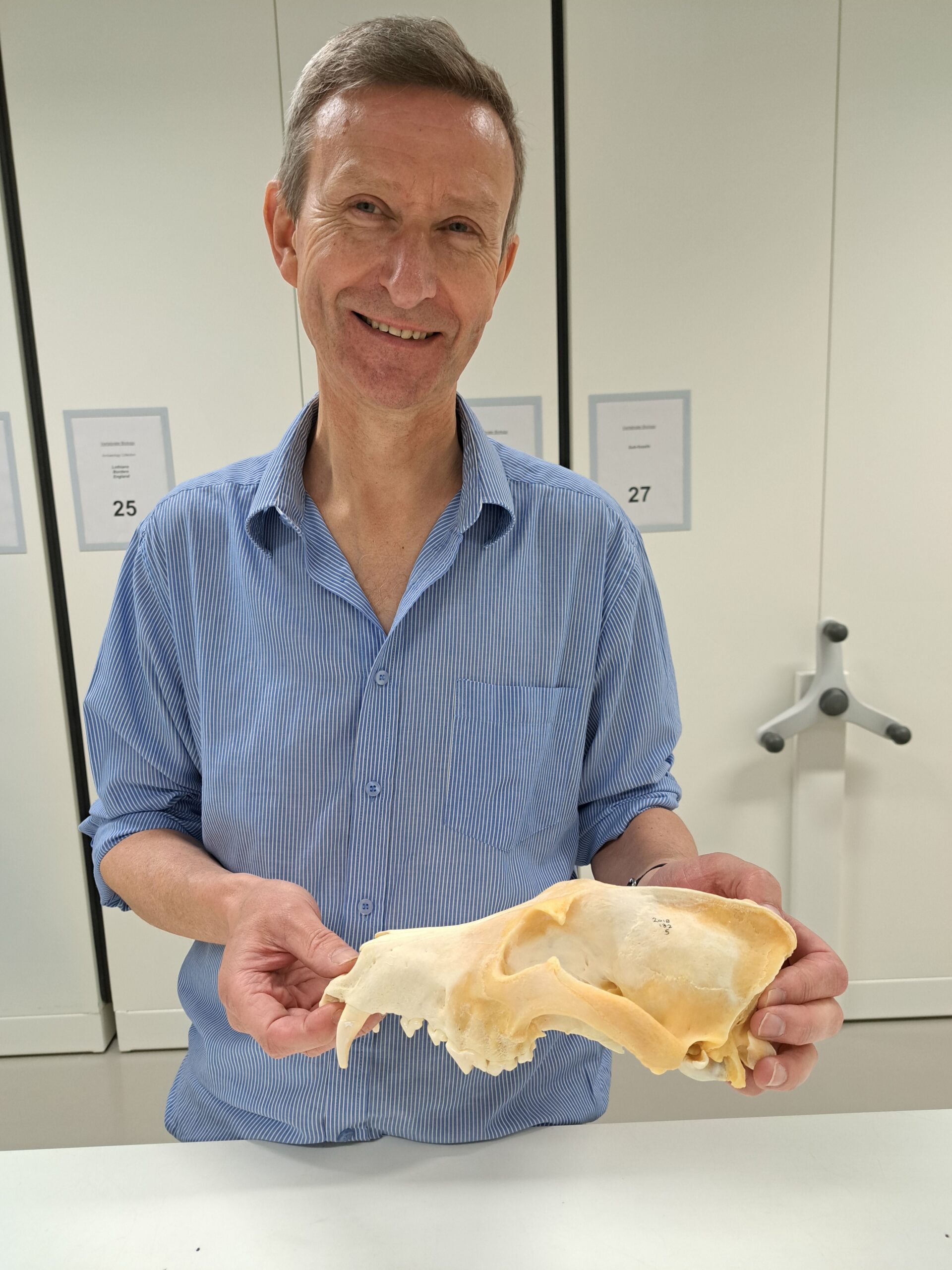For 12,000 years wolves and humans shared Scotland’s landscape. But as hunter- gatherers became farmers, wolves became their enemy and were hunted to extinction.
Now a new BBC Alba documentary is set to explore whether the story of the Scottish wolf is over.
Wolves arrived as the last ice age ended, following – like Scotland’s first human hunter- gatherers – the herds of deer and reindeer that crossed a now lost land bridge from Europe.
For thousands of years wolves and humans shared the landscape as ‘apex predators’, with the wolf entering human art, myth and belief.
Ryan Dziadowiec grew up in Poland and now lives in Scotland.
‘We have such a long history of living in places where wolves live wildly, and so I think there has always been a relationship, a quite difficult relationship at times but we always respected wolves without a doubt,’ he said.
Naturalist Roddy Maclean sees parallels between how wolves and humans communicate and work together.

Andrew Kitchener of NMS.
‘They’re very capable,’ he said. ‘They can communicate together. When they howl, each one in the pack has a different voice and they can identify each other from their voices.’
New carbon dating of a wolf bone, found in the Highlands, reveals it to be more than 6,200 years old.
The bone seems to have been broken, and then healed naturally.
This casts a light on the social cohesion of the wolf pack, as Dr Andrew Kitchener of the National Museum of Scotland explains.
‘Wolves live in packs so they hunt together and I guess if one is injured or not feeling very well then it gets a share of the food,’ he said.
‘So injured animals like wolves, or lions in their pride, can sometimes survive when one of them is injured.’
When humans gave up hunting and gathering and began farming the wolf became the enemy.
Dr Aonghas MacCoinnich of University of Glasgow sympathises with the early farmers.
‘They had very hard lives, short lives, brutal lives,’ he said.
‘If we think of the number of challenges against the people who raised cattle and raised animals – it’s hard enough to do that anyway without wolves, but, if there were wolves too, that increased and worsened the difficulty.’
Many places throughout the Highlands are claimed to be where the last wolf was killed, but MacCoinnich is sceptical.
‘We can’t be sure when the last wolf in Scotland was killed. There are different stories from different places. All of those stories are without certain historical evidence.’
Nature writer Jim Crumley, who makes fun of ‘last wolf syndrome’, believes that Scotland’s last wolf probably died alone of old age in a cave.
‘It’s a terrible arrogance to assume that we killed the last wolf,’ he said.
‘There would be one last wolf that we killed but that doesn’t necessarily mean that it was the last wolf.’
Shortly before 1700 the howl of the wolf was heard in Scotland for the last time. But could they return?
The loss of wolves meant the job of keeping deer numbers down fell to humans.
‘In a northern hemisphere country like this, if the wolf’s in place, then everything in nature can make sense,’ Crumley continues.
‘And if the wolf’s not in place, then very little in nature makes sense.
‘My pet theory is we put them into Rannoch, the Black Wood of Rannoch and the moor of Rannoch, and create some kind of wilderness reserve that could extend from the Black Wood in the north and as far west as the Black Mount, Glen Orchy and right over to Loch Awe and Loch Etive.
‘That piece of land that would connect with the Loch Lomond and Trossachs National Park in the south and the Cairngorms National Park in the north.
‘By having them in the middle of the country it would allow the whole population to engage with them and to feel a part of a process that would say these are our wolves, the middle of the country is the place to put them.’
It’s a highly controversial plan, however, and many disagree with Crumley’s theory, including Dr Andrew Kitchener.
‘There are cultural issues, the big bad wolf, but also there are real conflict issues with them potentially preying on livestock,’ he said.
Am Madadh-Allaidh airs on BBC ALBA on 3 October and will be available to stream on BBC iPlayer for 30 days.
Read more stories on Scottish Field’s wildlife and conservation pages.
Plus, don’t miss the October issue of Scottish Field magazine.
TAGS

